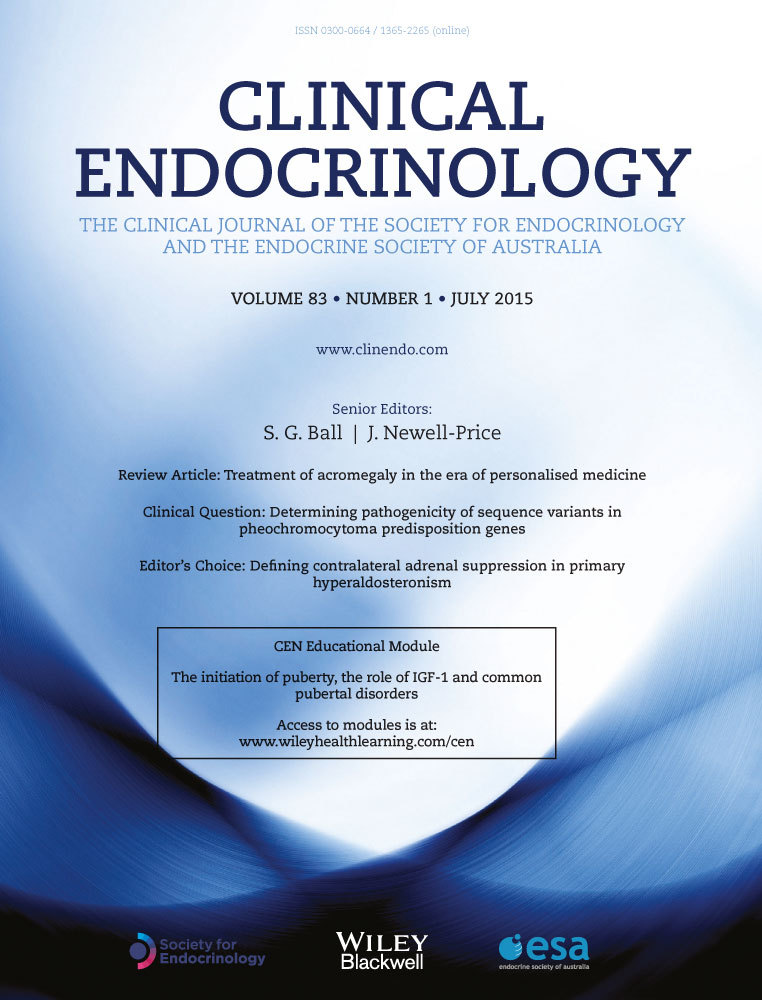Quantitative relationship between liver fat content and metabolic syndrome in obese children and adolescents
Summary
Objective
Previous studies have shown a significant association between quantified liver fat content (LFC) and metabolic syndrome (MetS) in adults, but the nature of this association in obese paediatric populations is unclear. The aim of this study was to investigate the quantitative relationship of LFC to MetS and its individual components in obese children and adolescents.
Design
A population-based cross-sectional study.
Patients and measurements
One hundred and eighty-nine Chinese obese paediatric subjects aged 5–16 years were enrolled. Measurements included MetS components, as defined by the Chinese-specific version of the International Diabetes Foundation MetS criteria (MetS-CHN2012), and LFC using proton magnetic resonance spectroscopy.
Results
LFC was significantly higher in subjects with MetS [median 9·7% (interquartile range 4·5–19·9%)] than without MetS [5·7% (2·0–12·8%)] (P < 0·01). LFC was also positively associated with the total number of MetS components (P for trend <0·01). In analyses adjusted for traditional risk factors, increasing levels of LFC were associated with a greater risk of MetS, hypertriglyceridaemia and low high-density lipoprotein cholesterol (P < 0·05 for all associations), but were not associated with risk of hyperglycaemia or hypertension.
Conclusions
In obese Chinese paediatric patients, quantitative measures of LFC are positively associated with the risk of MetS, hypertriglyceridaemia and low high-density lipoprotein cholesterol, independent of traditional risk factors. These findings suggest that quantitatively measured LFC may be a clinically useful marker for identifying obese paediatric who are at increased risk of developing MetS and its components.




